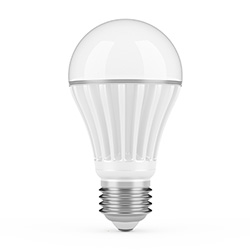Trending science: LED inventors honoured with 2014 Nobel Prize in Physics
It’s that time of year again. Leaders in the fields of literature, science, diplomacy and economics are being honoured for their work with probably the world’s most prestigious and well-known accolade: the Nobel Prize. On Tuesday, it was announced that Isamu Akasaki, Hiroshi Amano and Shuji Nakamura have been awarded the 2014 Nobel Prize in Physics for the invention of efficient blue light-emitting diodes (LED) which has enabled bright and more long-lasting and more efficient alternatives to older light sources. Before Akasaki, Amano and Nakamura, blue LED had remained a challenge for three decades. Red and green diodes had been around for a long time but without blue light, white lamps could not be created. The Royal Swedish Academy of Sciences says that when the team succeeded in producing bright blue light beams from their semi-conductors in the early 1990s, they triggered a fundamental transformation of lighting technology. The Academy adds, ‘Their inventions were revolutionary. Incandescent light bulbs lit the 20th century; the 21st century will be lit by LED lamps.’ Scientific American quotes Professor Per Delsing of the Nobel Committee for Physics who praised the team for their transformative research. He noted, ‘Thanks to the blue LED, we can now get white light sources which have very high energy efficiency and very long lifetime. This LED technology is now replacing older technologies. In fact, many of you carry this technology in your pocket. The flashlight and also the screen of modern smartphones uses LED technology.’ The Nobel Prize honours inventions of the greatest benefit to mankind. And there is no doubting the benefits of LED lighting. As about one quarter of world electricity consumption is used for lighting purposes, the LEDs contribute to saving the Earth’s resources. Materials consumption is also diminished as LEDs last up to 100 000 hours, compared to 1 000 for incandescent bulbs and 10,000 hours for fluorescent lights. According to The Royal Swedish Academy of Sciences which bestows the Nobel Prize, the LED lamp holds great promise for increasing the quality of life for over 1.5 billion people around the world who lack access to electricity grids: due to low power requirements it can be powered by cheap local solar power. As the Academy says, ‘The invention of the blue LED is just twenty years old, but it has already contributed to create white light in an entirely new manner to the benefit of us all.’ Akasaki, Amano and Nakamura, respectively from Meijo University and Nagoya University in Japan and University of California, Santa Barbara in the USA, join a long list of 851 Laureates and 25 organisations who have been awarded the prize between 1901 and 2013. Apart from the unparalleled prestige and acclaim, the three Laureates will also share a cash prize of SEK 8 million. For further information, please visit: http://www.nobelprize.org/nobel_prizes/physics/laureates/2014/(opens in new window)
Countries
Sweden



